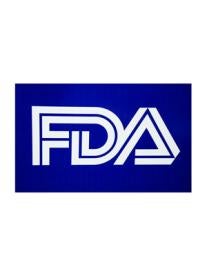New guidance could present liability concerns for device manufacturers.
On December 31, 2015, the Food and Drug Administration (FDA or Agency) issued a Draft Guidance for Industry titled “Public Notification of Emerging Postmarket Medical Device Signals ‘Emerging Signals’” (Draft Guidance).[1] Under the Draft Guidance, FDA would share new and evolving benefit-risk information about a device before it completes its evaluation and assessment of the information. However, FDA’s proposed publication of potentially incomplete or unsubstantiated risk information could present increased liability risks for device manufacturers. Due to a high level of interest by the medical device community and concern that the Draft Guidance departs significantly from existing FDA policy,[2] on January 27, 2016, FDA extended the comment period and requests electronic or written comments on the Draft Guidance by March 29, 2016.[3]
Overview
In the Draft Guidance, FDA proposes to provide new safety information about medical devices used in clinical practice (Emerging Signals) before it has fully analyzed, validated, or confirmed such information so that patients and physicians can make informed treatment choices based on the most current information. Typically, such information is comprised of reports of adverse events, which can change the benefit-risk profile of a medical device. Historically, FDA has communicated such important postmarket information only after it has analyzed the information and, in most cases, after having already reached a decision about relevant recommendations and whether it believes further regulatory action is warranted. Given FDA’s intent to release benefit-risk information to the public earlier in the process, medical device manufacturers will need to closely monitor any Emerging Signals associated with their own devices to ensure that FDA has all the appropriate information regarding the risk-benefit profile of such devices. Release of unconfirmed or incomplete information could increase medical device manufacturers’ liability exposure.
What Constitutes an “Emerging Signal”?
The Draft Guidance defines an “Emerging Signal” as new information about a medical device used in clinical practice that
-
the Agency is monitoring or analyzing,
-
has the potential to impact patient management decisions and/or alter the known benefit-risk profile of the device,
-
has not yet been fully validated or confirmed, and
-
for which the Agency does not yet have specific recommendations.
Emerging Signals may include (i) a newly recognized type of adverse event; (ii) an increase in the severity or frequency of reporting of a known event; (iii) new product-product interactions; (iv) device malfunctions or patient injury potentially related to improper device use or design; or (v) a reduction in benefit to the patient.[4]
FDA indicated in the Draft Guidance that it considers many factors in evaluating and communicating about Emerging Signals. Some of these factors include the following:
-
Seriousness of the adverse event(s) relative to the known benefits of the device
-
Magnitude of the risk and/or benefit
-
Strength of the evidence of a causal relationship between the use of a device and the adverse event
-
Extent of patient exposure
-
Whether there is a disproportionate impact on vulnerable patient populations
-
Potential for preventing, identifying, monitoring, or mitigating the risk
-
Availability of alternative therapies
-
Implications for similar or related devices
-
Anticipated time for completion of initial FDA assessment and development of recommendations
-
Accuracy and availability of information already in the public domain
FDA staff will strongly consider public communication about an Emerging Signal when the information (i) presents a new, potentially causal association, (ii) is reliable and supported by sufficient evidence, and (iii) could have important clinical implications for patient decisions or could alter the known benefit-risk profile of a device.
The Draft Guidance instructs that the initial assessment of the need to communicate Emerging Signals should be within 30 days of receiving the information. FDA indicates that updates to the communication should be posted to FDA’s website at least twice per year, or more often as necessary and appropriate, until either (i) the Agency issues a more formal “Safety Communication” containing specific recommendations for patients, health care providers, and/or health care facilities; or (ii) the signal evaluation is otherwise completed and the public is notified of the Agency’s conclusions. However, the Draft Guidance lacks specific time frames regarding FDA’s investigation into an Emerging Signal. As such, it is unclear whether updates will be posted on a timely basis.
Conclusion
FDA’s Emerging Signals Draft Guidance presents important liability and regulatory considerations for the medical device industry. Please contact our team if you are interested in submitting a comment to the Draft Guidance Docket.[5]
[1] FDA Draft Guidance for Industry and Food and Drug Administration Staff (Dec. 31, 2015).
[2] Several comments have already been submitted to Docket #FDA-2015-D-4803.
[3] See 81 Fed. Reg. 4632 (Jan. 27, 2016) https://www.gpo.gov/fdsys/pkg/FR-2016-01-27/pdf/2016-01610.pdf. Noting that comments can be submitted at any time, but comments received by March 29, 2016 will be more fully considered while the Agency drafts a Final Guidance.
[4] Draft Guidance at p. 5. Additionally, a medical device Emerging Signal may be associated with one product from one manufacturer, one type of product or similar products from multiple manufacturers, or multiple different product types from multiple different manufacturers, e.g., materials issues.
[5] Comments should be submitted to Docket #FDA-2015-D-4803.




 i
i


